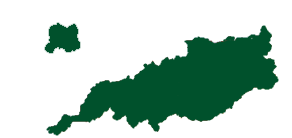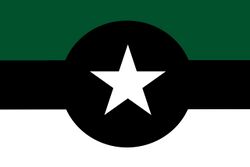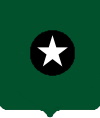Swinas: Difference between revisions
TentuberrAlt (talk | contribs) No edit summary |
TentuberrAlt (talk | contribs) |
||
| Line 31: | Line 31: | ||
=== Independence === | === Independence === | ||
Swinas gained its independence from Riamo in 1915, marking the end of colonial rule and the beginning of its journey as a sovereign nation. The process of independence was relatively peaceful, as the Riamese government had begun to release a number of its colonies at the time. Independence Day, celebrated on the 15th of September, is a national holiday in Swinas, commemorating the country's freedom. | |||
===Early History after Independence=== | ===Early History after Independence=== | ||
Revision as of 14:23, 16 January 2023
Unitary Republic of Swinas | |
|---|---|
 | |
| Capital | Goatford |
| National Language | German, Common |
| Ethnic groups |
|
| Demonym(s) | Swish |
| Government | Unitary Republic |
• President | Amelia Norris |
| Population | |
• 2021 census | 42,299,153 |
| GDP (nominal) | estimate |
• Total | 448,984,350,000 |
| Currency | Swish Ram, Swish Buckling |
The Unitary Republic of Swinas, commonly referred to as simply Swinas, is a country known for its diverse landscape, which ranges from the temperate climate and diverse landscape of North Swinas, to the largely desert landscape of South Swinas. The country's capital and largest city is Goatford, located in North Swinas. Swinas also has a growing interest in space exploration and a unique cuisine, particularly known for it's bizarre pizza toppings. The country's history and culture is shaped by the contrast between North and South regions and by the legacy of the indigenous people of South Swinas. Swinas offers an exciting blend of natural beauty, delicious food, and technological advancements that make it a unique and interesting destination for tourists and researchers alike.
History
Pre-Riamese Swinas
Before the arrival of the Riamese colonizers, the deserts of South Swinas were controlled by the Kawhaibia Dynasty, an indigenous tribe with a rich history and culture. The Kawhaibia people had developed unique methods of survival and adaptation to the harsh desert environment, and had built a prosperous civilization. The last emperor of the Kawhaibia Dynasty was Emperor Annikki, who, according to local accounts, politely handed the Riamese the crown and walked away. This act of peaceful surrender allowed for a relatively smooth transition of power and allowed the Kawhaibia people to maintain a significant degree of autonomy and cultural preservation under the rule of the Riamese colonizers. Today, the legacy of the Kawhaibia Dynasty continues to play an important role in the cultural identity of South Swinas and its people.
Riamese Colonization
The Riamese colonization of Swinas began in the early 20th century, when Riamese explorers and traders first arrived in the region. Initially, the Riamese encountered friendly relations with the indigenous tribes, who were welcoming of outsiders and willing to establish trade and cultural exchange. The Riamese established a number of settlements and trading posts, which served as a base for further expansion into the interior. The colonization brought changes to the region, with the introduction of new technologies, religions and cultures, but also brought positive developments such as education and healthcare. The Riamese and the indigenous people of Swinas developed a peaceful coexistence, allowing both cultures to learn from one another and benefit from their interactions. This led to a relatively smooth transition of power and allowed the indigenous people to maintain a significant degree of autonomy and cultural preservation under the rule of the Riamese colonizers. The legacy of the friendly relationship between the Riamese and the indigenous people of Swinas continues to play an important role in the cultural identity of South Swinas and its people.
Independence
Swinas gained its independence from Riamo in 1915, marking the end of colonial rule and the beginning of its journey as a sovereign nation. The process of independence was relatively peaceful, as the Riamese government had begun to release a number of its colonies at the time. Independence Day, celebrated on the 15th of September, is a national holiday in Swinas, commemorating the country's freedom.
Early History after Independence
After gaining independence from Riamo in 1915, Swinas faced the challenge of building a new nation. A referendum was held to decide on the political system that the country should use, and it was eventually decided that Swinas would be a Federal Republic. This system was chosen because it would ensure that the different regions of the country would have some degree of autonomy and representation in the government. The country's leaders worked to establish a stable government, a fair and efficient legal system, and an economy that would support the needs of all citizens. In the early years of independence, the country focused on developing its infrastructure, including transportation, communication, and energy systems. Additionally, the government made significant investments in education and healthcare, which helped to improve the overall standard of living for its citizens. Despite facing economic and political challenges, the country was able to establish a stable and prosperous nation, laying the foundations for the future development of the country.
Politics
Amelia Norris
During the elections of 2021, Amelia Norris, a Unitary Politician, ran for president of the formerly Federal Republic of Swinas. She campaigned on a platform of unity and modernization, emphasizing her commitment to improving the lives of all citizens and fostering a sense of national pride. Her campaign was fierce and competitive, as she faced several strong candidates from different political parties. Despite this, Amelia Norris emerged victorious, winning a majority of the votes in the election. With her victory, she became the 3rd woman to become president of Swinas. Her win was seen as a significant milestone in the country's political history, as it demonstrated the increasing participation and influence of women in the political sphere. Her presidency was marked by a number of significant reforms and achievements in areas such as education, healthcare, and infrastructure development, as well as uniting all the Swish provinces into one singular state.
Swish Socialist Party
Since 2016, there has been a significant increase in socialists in the government in Swinas. This trend is reflected in the growing popularity of socialist policies and ideas among the population, as well as the increased representation of socialists in local and national elections. In 2019, a socialist candidate even ran for president, though they were greatly outnumbered in support by other candidates from other parties. Despite this, the socialist candidate still managed to secure a significant number of votes, demonstrating the growing support for socialist ideas in the country. This trend has continued to evolve and the socialist party has become more influential in the government, and it is expected that in the future, the socialist party will continue to gain more support.
Foreign Relations
The Unitary Republic of Swinas has a history of good relations with other countries, particularly with the democracies of Hylia and Trident Union, both are non-bordering countries. These countries have strong diplomatic ties, with regular high-level visits and meetings between government officials. The countries also have a strong economic partnership, with a significant amount of trade and investment taking place between them.
Swinas and Hylia have a long-standing friendship, founded on shared values such as democracy, human rights and free trade. They have cooperated on various international issues, such as peacekeeping operations and humanitarian aid, and have a strong relationship in cultural exchange.
Trident Union, being a faraway country, also has a strong relationship with the country. The two countries have a mutual defense agreement and have cooperated on various issues such as counterterrorism, drug trafficking and illegal migration. Swinas and Trident Union also have a strong economic partnership, with many Swish companies investing in Trident Union and vice versa.
Swinas also maintains cordial relations with other countries in the region and is active in regional organizations such as the Anterian Peace League. Overall, the Unitary Republic of Swinas is committed to promoting peace and stability in the international community and has a history of maintaining good relations with other countries. The country's foreign policy is based on the principles of non-interference, mutual respect, and cooperation with other nations.
Economy
Swish Ram and Buckling
For a brief period of time after independence in 1915, Swinas kept the Riamese currency. However, with the help from the Riamese, the country soon established its own currency, the Swish Ram, named after an old goat religion that was practiced by the indigenous people of Swinas. The Swish Ram quickly became the main currency used throughout the country, and it was widely accepted by merchants and businesses. In addition to the Swish Ram, the country also established the Swish Buckling, which was used for the paying of non-dollar increments. This system helped to ensure that the country's economy was stable and that the currency was easily accessible to all citizens. Today, the Swish Ram and the Swish Buckling are still in use and continue to play an important role in the country's economy.
Geography
North Swinas
North Swinas is a region known for its temperate climate and diverse landscape. It serves as a major agricultural hub for the country, producing a variety of crops and livestock. The region is also home to Goatford, the capital and largest city of Swinas, as well as many smaller towns and villages that offer a unique glimpse into the culture and way of life of the residents. North Swinas plays a crucial role in the economic and cultural development of the country and is an important destination for both tourists and residents alike.
South Swinas
South Swinas is a region known for its largely desert landscape. The region was previously home to a large tribe, which represented the indigenous population of Swinas until it was colonized. The arid conditions of the region have shaped the culture and way of life of its inhabitants, who have developed unique methods of survival and adaptation. Despite the harsh environment, South Swinas has a rich history and culture, with many ancient ruins and artifacts that attest to the resilience of the indigenous people. Today, South Swinas remains an important part of the cultural identity of Swinas, and it continues to be a significant destination for those interested in the history and culture of the region.

